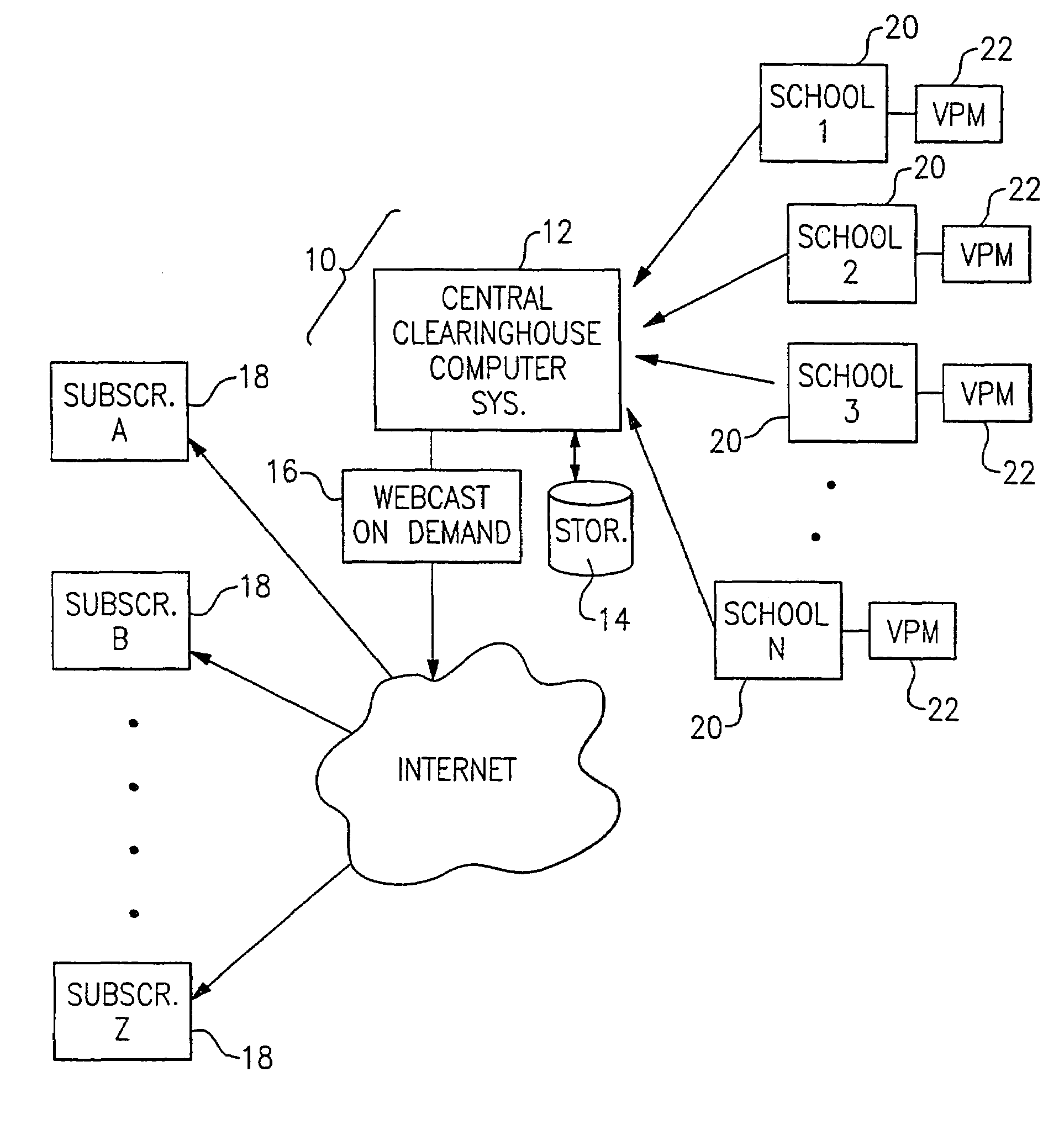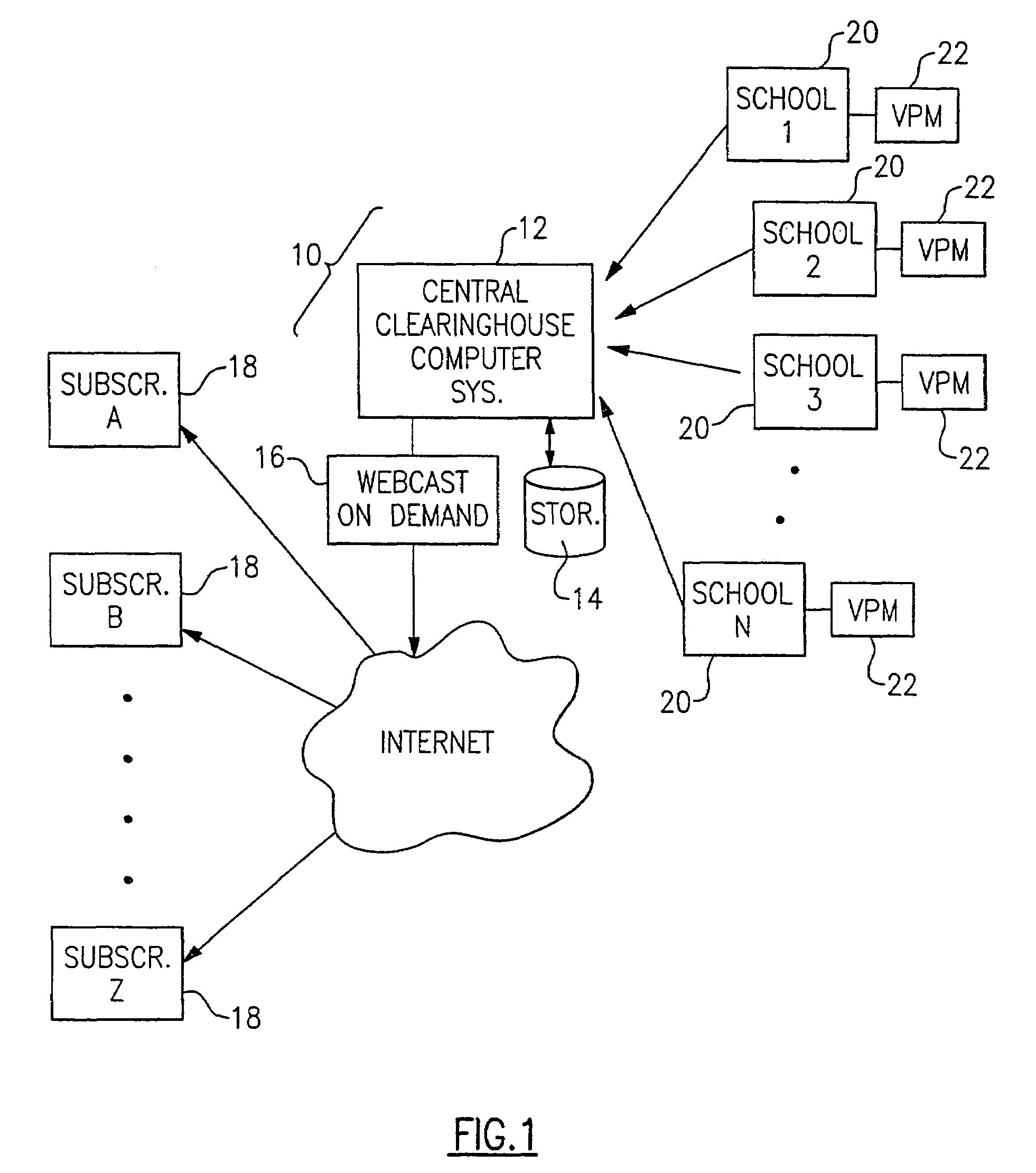Archiving and viewing sports events via Internet
a sports event and internet technology, applied in the field of self-help and doityourself video and audio production and transmission of sports events, can solve the problems of difficult for a major network to sell advertising time at prices that would the cost associated with producing a sports, and the difficulty of a major network to sell advertising time at prices that support the cost of production, etc., to achieve the effect of reducing the cost involved, simple production, and low cos
- Summary
- Abstract
- Description
- Claims
- Application Information
AI Technical Summary
Benefits of technology
Problems solved by technology
Method used
Image
Examples
Embodiment Construction
[0035]With reference to the Drawing, FIG. 1 is a general schematic view of the system 10 for receiving, storing, and webcasting of sports events or other events that may have an audience that is too small to justify the expense of a regular on-air television production. Here, at the heart of the system 10 is a central clearinghouse computer system 12 that receives the sports videos produced by various schools, clubs or other institutions, and presents the video recordings of these events by webcasting them to subscribers that visit the clearinghouse Internet web site. The televised sports events are stored on a digital memory arrangement 14 associated with the clearinghouse computer system 12, and there is also an on-demand webcast facility 16 that obtains the digital video recordings of the sports events and transmits them over a wide-band, high speed connection, via the Internet, to authorized subscribers 18. In this embodiment, there are a number of subscribers 18, each of which ...
PUM
 Login to View More
Login to View More Abstract
Description
Claims
Application Information
 Login to View More
Login to View More - R&D
- Intellectual Property
- Life Sciences
- Materials
- Tech Scout
- Unparalleled Data Quality
- Higher Quality Content
- 60% Fewer Hallucinations
Browse by: Latest US Patents, China's latest patents, Technical Efficacy Thesaurus, Application Domain, Technology Topic, Popular Technical Reports.
© 2025 PatSnap. All rights reserved.Legal|Privacy policy|Modern Slavery Act Transparency Statement|Sitemap|About US| Contact US: help@patsnap.com



